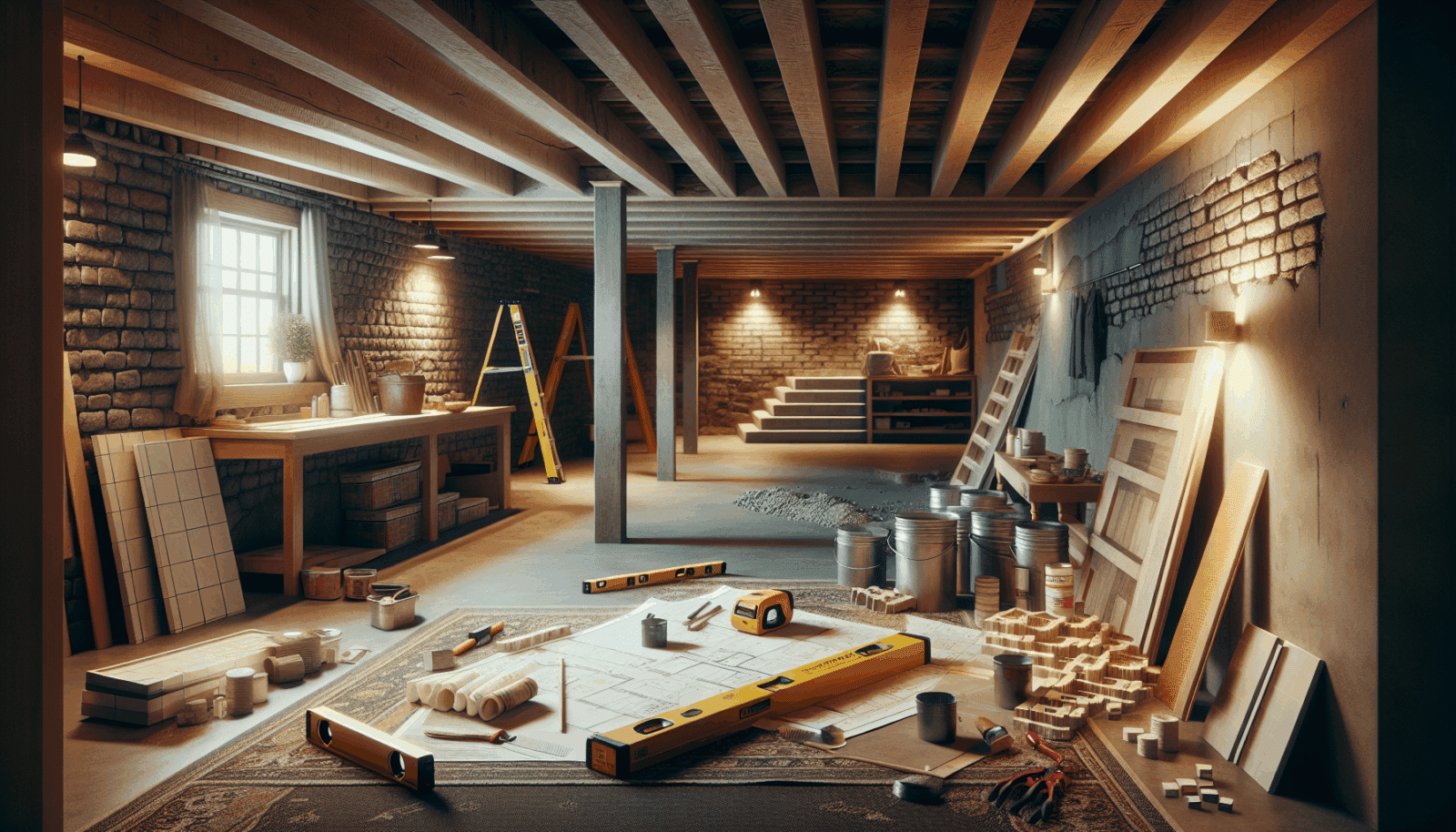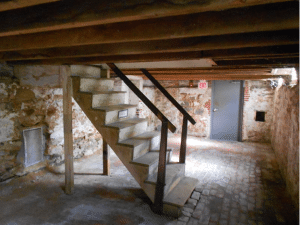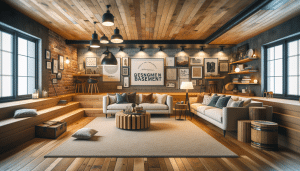Welcome to the ultimate guide on basement Finishing walls! At Utah Basement Finishing, we understand that transforming your basement can be a daunting task. Homeowners often face challenges such as moisture control, insulation, and choosing the right materials. This article is designed to help you navigate these issues, ensuring your basement renovation is smooth and stress-free.
Contents
- 1 Understanding Your Basement’s Needs
- 2 Importance of Moisture Control
- 3 Choosing the Right Insulation
- 4 Drywall Installation Tips
- 5 Incorporating Proper Ventilation
- 6 Lighting Options for Basements
- 7 Designing for Comfort and Style
- 8 Soundproofing Strategies
- 9 Adding Electrical Outlets and Wiring
- 10 Final Touches and Inspections
- 11 Key Considerations in Basement Wall Finishing
- 12 Conclusion
Understanding Your Basement’s Needs
Every basement has its unique requirements. Whether it’s a game room, home office, or gym, identifying how you plan to use the space will influence your finishing choices. Taking the time to evaluate your needs can prevent costly mistakes and make the rest of the process much more straightforward.
To start, consider what functions your basement will serve. Will it be a lively space for family gatherings or a cozy nook for relaxation? Knowing this will guide you in choosing appropriate materials and designs.
Additionally, take the current condition of your basement into account. Are there any moisture issues? Is the space properly insulated? Answering these questions is crucial before any construction begins.
Importance of Moisture Control
Moisture is arguably the biggest concern when it comes to basement finishing. Without proper moisture control, you risk mold, mildew, and even structural damage. Addressing this issue early on will save you headaches down the road.
Start by checking for any existing water leaks or damp spots. If you find any, resolve these issues immediately with professional help. Seal cracks and consider installing a sump pump for added protection.
Next, use moisture-resistant materials. Opt for treated wood, waterproof insulation, and basement-specific drywall to mitigate any future moisture problems.
Choosing the Right Insulation
Proper insulation is vital for a comfortable and energy-efficient basement. It helps regulate temperature, keeping your space warm in the winter and cool in the summer. Besides comfort, it also reduces energy costs.
When it comes to insulation, you have various options. From spray foam to fiberglass batts, each type has its advantages. Foam boards are great for moisture resistance, while fiberglass is Cost-effective and easy to install.
Regardless of the material you choose, ensure it’s installed correctly. Improper insulation can result in drafts, higher energy bills, and even moisture issues.
Drywall Installation Tips
Drywall is a popular choice for finishing basement walls due to its affordability and ease of installation. However, there are a few tips to keep in mind to ensure a smooth process.
First, opt for mold-resistant drywall to protect against moisture. This type of drywall is designed to withstand humid conditions, making it perfect for basements.
When installing drywall, ensure you leave a small gap between the bottom edge and the floor to prevent potential water damage. This gap will allow any moisture to flow underneath without soaking into the drywall.
Incorporating Proper Ventilation
Proper ventilation is often overlooked but is essential for maintaining air quality and preventing moisture buildup. Without adequate airflow, basements can become a breeding ground for mold and mildew.
Consider installing a ventilation system designed for basements. These systems can range from simple exhaust fans to more complex setups involving air exchangers.
Additionally, ensure that existing vents and Windows are unobstructed. Proper ventilation not only improves air quality but also enhances the overall comfort of your basement space.
Lighting Options for Basements
Lighting plays a crucial role in making your basement feel inviting and functional. Given that basements typically have limited natural light, artificial lighting must be well planned.
Recessed lighting is a popular choice as it provides ample light without taking up ceiling space. It’s ideal for basements with low ceilings, offering a sleek and modern look.
Additionally, consider adding task lighting for specific areas like workspaces or reading nooks. Table lamps, floor lamps, and under-cabinet lighting can make these spots more functional and cozy.
Designing for Comfort and Style
A finished basement should be both comfortable and visually appealing. The design elements you choose can make a big difference in how the space feels and functions.
Start by selecting a color palette that complements the rest of your home. Light colors can make a basement feel more spacious, while bold tones add character.
Consider your flooring options carefully. Carpeting adds warmth and comfort, but hardwood or laminate flooring is easier to clean and maintains a sleek appearance.
Soundproofing Strategies
Don’t underestimate the importance of soundproofing your basement. A well-insulated basement can serve as a private retreat or a noise buffer for the rest of your home.
You can soundproof your walls by adding extra layers of drywall or using sound-absorbing insulation. Acoustic tiles and panels are also effective for minimizing noise.
Remember, doors and windows can also be sources of sound leakage. Consider upgrading to noise-reducing versions to achieve a truly quiet space.
Adding Electrical Outlets and Wiring
Electrical work is a crucial aspect of basement finishing. Ensuring you have enough outlets and proper wiring can enhance the functionality of your space.
First and foremost, always hire a licensed electrician for any electrical work. This ensures all installations meet code and are safe.
When planning the layout, think about where you will need power. Plan for extra outlets in areas where you anticipate heavy usage, such as entertainment centers or office spaces.
Final Touches and Inspections
As you near the completion of your basement finishing project, there are a few final touches and inspections to ensure everything is perfect.
Walk through the space and make a checklist of any minor touch-ups that need attention. This could include paint touch-ups, trim installations, or cleaning tasks.
Finally, schedule a professional inspection to check for any issues you may have missed. This step ensures that your basement is safe, functional, and ready to enjoy.
Key Considerations in Basement Wall Finishing
When it comes to basement wall finishing, there are some key considerations to keep in mind:
- Moisture Control: Ensure all moisture issues are addressed before starting. Failure to do so can lead to mold and mildew.
- Insulation: Choose the right type of insulation material for your needs. Proper insulation can greatly enhance comfort and energy efficiency.
- Ventilation: Incorporate proper ventilation systems. Good airflow is essential for maintaining a healthy environment.
- Lighting: Plan your lighting to enhance both functionality and ambiance. A well-lit basement is more inviting and usable.
- Soundproofing: Consider adding soundproofing features. This can make your basement a quieter, more relaxing space.
Conclusion
We hope this ultimate guide has provided you with valuable insights into basement finishing walls. From moisture control to lighting and soundproofing, each step is crucial in creating a comfortable and stylish space. For further assistance and professional Services, don’t hesitate to contact Utah Basement Finishing by phone # 801-515-3473 or Request a Free Quote.




